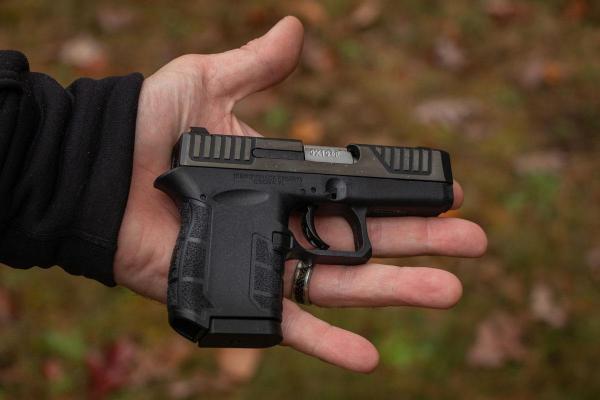You need proper technique to shoot micro-compact pistols well so that they are both accurate and reliable
The most popular handgun in America right now is the ultra-compact 9mm semi-automatic.
These mini pistols have become so popular because they’re very easy to carry concealed, and because they offer a reasonable amount of power.
No one wants to lug around a heavy handgun all day, but no one wants to try to shoot to save their life with a mouse gun either.
However, as great for personal protection as these small pistols can be, they are not perfect.
The rising interest in concealed carry has put these ultra-compact 9mm handguns in the hands of a lot of folks from many different walks of life.
Some are experienced shooters, and some are not.
The combination of these itty-bitty guns and a lack of shooting experience can sometimes deliver results that are less than desirable in terms of shooter comfort and reliability.
Power & Resistance
By any measure, the 9mm Luger cartridge is a high-performance handgun cartridge.
It will push a 115-grain bullet out of even short barrels as fast as 1100 fps. As Newton told us, for each action, there is an equal and opposite reaction.
And, as the 36,000 psi of pressure builds in the chamber of the handgun, one reaction is the bullet leaving the barrel.
The other reaction is the cycling of the pistol’s action and recoil.
For the pistol’s action to function properly it must have a certain amount of resistance to allow the slide to fully compress the recoil spring, eject the empty case, and then feed a new cartridge all the way into the chamber.
This resistance is obtained through the grip the shooter has on the handgun. If the grip is not strong enough the pistol can almost twist free.
This can cause pain to the shooter’s hand and prevent the pistol from cycling as it is supposed to.
The recoil impulse of a Diamondback DB9, which weighs only about 14 ounces, can be twice as much as the recoil impulse of the larger Glock 19, which weighs about 24 ounces.
This, combined with the fact that the grip area of the ultra-compact DB9 is much smaller, makes the recoil more painful and it makes the pistol more difficult to hold on to.
Grip Force
Because of this, when shooting these ultra-compact 9mm handguns the shooter must maintain a firm grip and they must also keep their wrist locked.
In other words, they cannot allow the handgun to shift within their grip during recoil and they cannot allow their wrist to twist with the recoil.
If they allow either to happen, the chances of a shooter induced stoppage or jam is greatly increased.
Similarly, the shooter’s ability to quickly get the gun back on target for a fast follow-up shot is diminished.
Fortunately, the amount of grip force and wrist strength needed to control these ultra-compact pistols is not greater than the average human is capable of applying.
The average person – at least with some practice – should be able to properly manage one of these little pistols.
But being able to manage the pistol and being able to shoot it comfortably is not the same thing.
Because of the intense recoil impulse these ultra-compact 9mm pistols deliver, it’s a good idea for anyone interested in carrying one to spend some time shooting it before they make their purchase.
Mastering the Draw
If you’re on the range recreationally shooting you can take your time to get a firm and proper grip on these little pistols.
If you do that, and if you keep your wrist stiff, you should not have any reliability issues.
However, when drawing an ultra-compact handgun, like you might have to do during a defensive encounter – under the constraints of time and pressure – you may not obtain the ideal grip that’s needed.
Because obtaining a proper grip on these itty-bitty guns is so important to properly managing them, it’s critical that you frequently practice obtaining that proper grip while the handgun is in the holster – just before you draw – until it becomes routine.
That way, when you must present your handgun to a threat in a hurry, you won’t have to adjust the grip before you shoot, and you will be able to properly control the handgun to prevent any stoppages.
